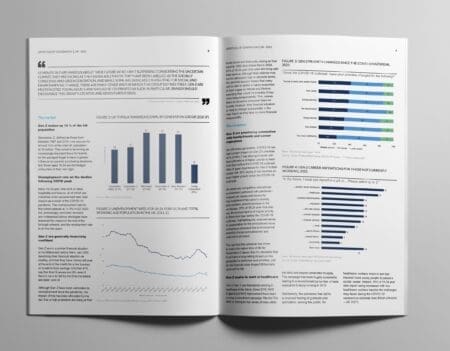The financial landscape is changing and we are entering an era of mobile-first customer service and engagement. As consumers are faced with more and more options for financial products, the primary banking relationship is changing and giving rise to new disruptors. The battle to maintain relevance has begun and today’s leading financial brands, from traditional brick-and-mortar banks to digital-only players, are upping the ante when it comes to brand loyalty. As the competition heats up in the financial space, brands need to make sure they’re offering competitive pricing, but also providing (and proving) value in terms of what you get for your money.
1 in 5 US consumers would rather get new digital services from their current financial provider.
This is especially apparent when it comes to digital services and mobile capabilities, but the advantage lies with a customer’s current provider. According to Mintel’s US report on digital trends in finance, 19% of all consumers in the US would rather get new digital services from their current financial provider compared to 11% of consumers who would switch providers for one with a better digital experience. This is a notable difference, but it becomes even more pronounced among consumers 45 and older (17% vs. 3%, respectively). This highlights the importance of building a solid relationship with your existing customers, but also continuing to enhance your services with new and innovative features.
American Express has developed some out-of-the-box ways of enhancing their customer’s experience with the brand. Last year the AmEx launched a pilot version of a new personal concierge app, AskAmex, to help cardholders make flight, hotel or restaurant reservations. In January of this year, AmEx announced the purchase of the company behind this AI technology, Mezi. With the technology residing in-house, AmEx can further fuel its own growth in the world of AI-powered chat bots, which is quickly becoming the channel of choice for today’s digital consumers.
Acorns, the financial management and micro-investing service, has teamed up with PayPal to create a more convenient experience for its customers. With over 3 million users in the U.S., Acorns targets low- and middle-income consumers with a behind-the-scenes model of investing as a way to foster better savings habits. Through a partnership with PayPal, Acorns has integrated its service into the PayPal platform so users can view and even fund their accounts straight from their PayPal balances. It’s only a matter of time before this same functionality incorporates Venmo accounts as well.
And as the old saying goes, if you can’t beat ‘em, join ‘em. That’s what Chase and Goldman Sachs have done to combat industry disruptors with the launch of their off-shoot brands, Finn and Marcus. Finn is Chase’s new standalone mobile banking app, which targets a younger and more mobile-first consumer than the bank’s typical customer. What’s so interesting about the marketing collateral that Mintel Comperemedia has observed from Finn is that the brand is making a concerted effort to differentiate itself from Chase’s established brand image and introduce itself as something entirely new. In a similar vein, Goldman Sachs pushed into consumer lending with the debut of Marcus in 2016, focusing on a lower-income clientele than Goldman Sachs’ legacy brand and offering refinance loans to combat credit card debt.


What we think
As new entrants try to shake things up in the financial services industry, traditional players are finding new and creative ways to combat the competition through enhanced customer experiences and mobile-first conveniences. At the end of the day, brands should have a strategy built around establishing a solid customer relationship that will foster a strong sense of loyalty well into the future.








































